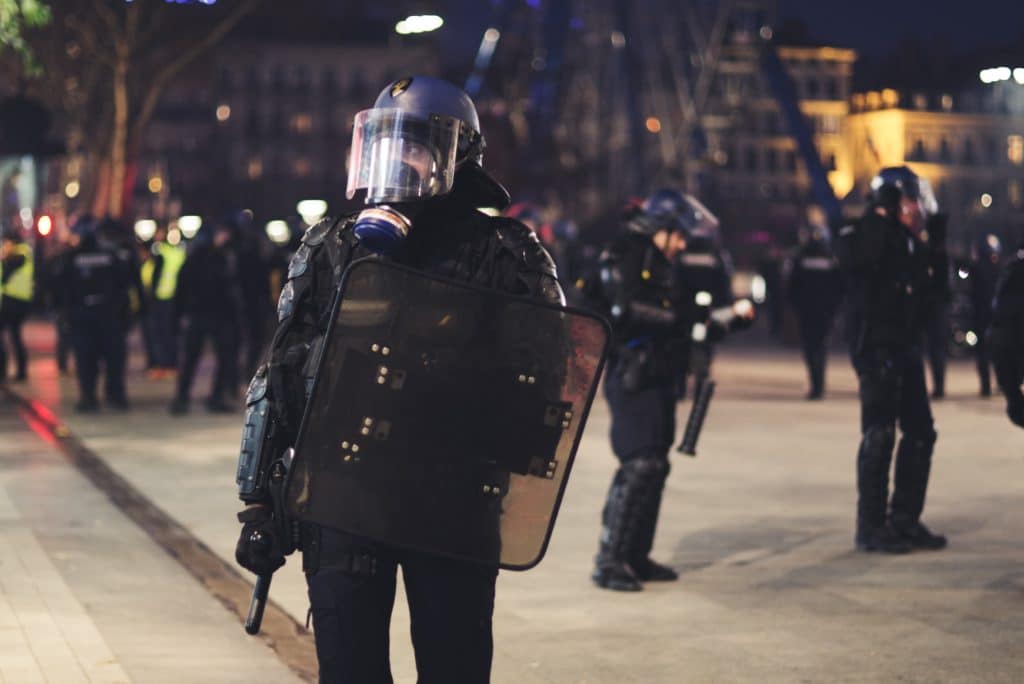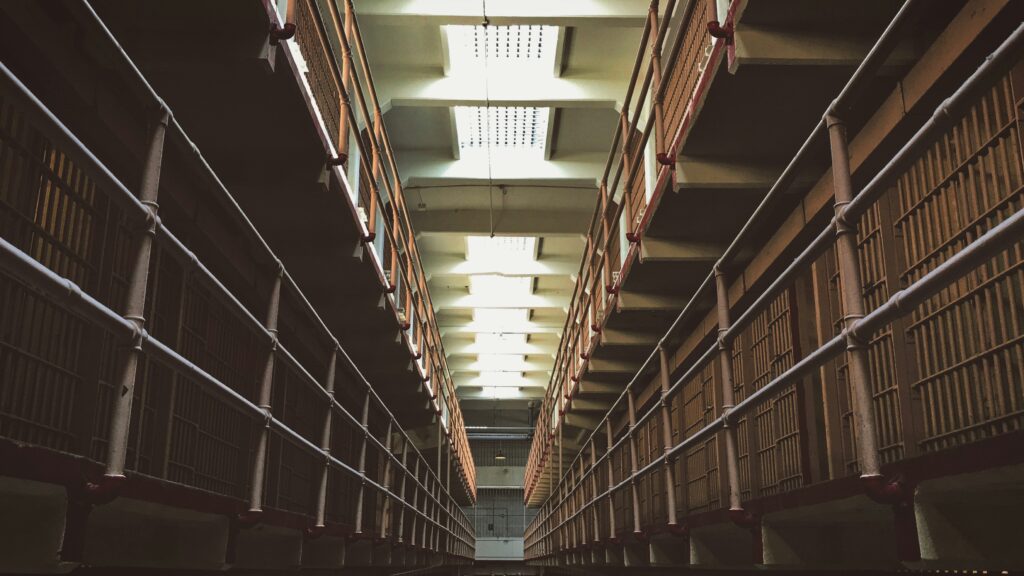Social justice issues and the War on Drugs are linked so closely that it will take a complete deconstruction and reconstruction of policy, the criminal justice system, and law enforcement in order to move forward humanely and effectively as a society. A key issue within the War on Drugs, in which cannabis prohibition has played a huge role, is the excessive militarization of local police, sheriffs, and other law enforcement. While the legalization of cannabis and the overall Drug War will not put an end to discriminatory policing against communities of color and other marginalized groups, it will clearly be a step in the right direction.
A report from the American Civil Liberties Union (ACLU) finds that American policing has become unnecessarily and dangerously militarized. For decades, the federal government has equipped state and local law enforcement agencies with military weapons and vehicles, as well as military-style tactical training for the, often explicit, purpose of waging the War on Drugs. The disproportionate impact of the War on Drugs in communities of color has been well-documented.
Marcus Harcus is a an activist in Minneapolis, MN, who has been on the ground doing social justice and drug law reform work for years, and is especially with the current demonstrations and activation that is happening now, in light of the recent murder of Goerge Floyd by Minneapolis police just a few weeks ago. Harcus, now a political candidate for Minnesota State Representative in House District 59A in North Minneapolis, said:

“One of the biggest takeaways for me, even though I already knew it, was about the thousands of people out there who have been victims of police harassment and police violence. And, typically, when these high-profile police killings make the news (mostly because of cell phone videos going viral on social media) what happens is that usually the police in the media seem to blame the victim, and often they don’t have anything on these people except that they were cannabis consumers.”
Byrdie McCoy is a Holistic Fitness Coach and Founder of Byrdie’s Babes. She expanded on this, saying:
“Black people have always known we are a target for police brutality or worse. We’ve watched them plant drugs on us, We’ve heard stories of officers using photos of black men for target practice, we’ve seen videos of them beating and killing our people, the list goes on. We have to tell our kids to call us instead [of the police] if they’re ever in danger, because we are afraid of what may happen if they call the police first. The people who should protect us we cannot trust and so we are either silenced or risk being interrogated, arrested, beat or killed. This should not be our reality. Something has got to change. Defunding the police is a great start.”
Inge Fryklund is a retired state’s attorney and board treasurer for Law Enforcement Action Partnership (LEAP) and agrees. She explained, “The Drug War and police militarization and racism are all intertwined and they feed on each other. This huge problem of the militarization of police departments where the military is passing off billions of dollars through the 1033 program.”
What is the 1033 program?
A little history, first…
History of Police Militarization in America
While police militarization began with some measures in the early 20th century, it was escalated in the 1950s and 1960s, an era in which race riots and anti-war protests were common in many U.S. cities. But, many feel that it really picked up after the 1965 Watts riots, a six-day race riot sparked by conflicts with the Los Angeles Police Department (LAPD). These riots killed 34 people and gave way to the trend of arming and equipping law enforcement officers with battlefield weapons. Then, following the 1967 riots in Detroit, MI, as well as increasingly militarized organized crime (thanks in part to the beginnings of the War on Drugs), the pull for more weaponry and force from police was fueled by a series of other events over the next several decades, leading the government to create the 1033 program.
What Is the Federal Government’s 1033 Program for Law Enforcement?
The 1033 program was enacted in the wake of the 1997 North Hollywood shootout. The National Defense Authorization Act for Fiscal Year 1997 created the 1033 program, and the program allowed law enforcement agencies to get their hands on military hardware. The process rapidly increased from there. In fact, between 1998 and 2014, the cost of police militarization and the dollar value of military hardware sent to police departments nationwide skyrocketed from $9.4 million to a startling $796.8 million. By 2014, $5.1 billion in material was transferred from the Department of Defense to local police and law enforcement across the country, with ammunition being the most common requisition and about 8,000 law enforcement offices participating in the program.
Because of the 1033 program, American police have received a massive amount of heavy-duty, military-grade hardware. This equipment includes armored personnel carriers (APCs), assault rifles, submachine guns, flashbang grenades, grenade launchers, sniper rifles, and Special Weapons and Tactics (SWAT) teams. Many times it seems that the change in equipment for police appears to cause a change in attitude where police or other law enforcement see themselves as controlling and disciplining people, rather than as public servants whose sworn duty is to keep citizens and communities safe.
“We advocate for a return to a less dangerous, more collaborative style of policing. We should not be able to mistake our officers for soldiers.” – ACLU
Frylund touched on how the equipment we are seeing on police in the streets of our communities is the same equipment she saw during her time in Afghanistan, where she was advising national, provincial, and municipal governments, as well as the U.S. Army and Marine Corps. Throughout her time there, she observed the detrimental effects of U.S. drug policy on the Afghan people.
“I advocate for abolishing the 1033 program. Obama put some restrictions on it, but then those were reversed by Trump. There is no reason in the world why local police need military equipment. The military was passing this equipment directly to police and sheriff offices, bypassing the elected officials in those areas, as well as democratic accountability. The Pentagon should have no role in equipping police.” – Inge Fryklund
The War on Drugs, Police Militarization, and Racism
As mentioned, the War on Drugs and the organized crime that it has caused has given law enforcement more motivation to outfit themselves with military equipment and tactics. Cannabis prohibition has been one of the biggest parts of the War on Drugs, and as more states change laws and push forward with cannabis legalization, the conversation about federal legalization and working towards decriminalizing all drugs has been opened as wide as ever in the current climate of civil unrest and the push for anti-racism in the U.S. especially.
Image via Intercept
Jesce Horton is theCofounder of Nuleaf Project and LOWD cannabis company and has been advocating for sound drug laws and social justice, while also working in the cannabis industry for several years. Horton said:
“Drugs, cannabis being a big part of that, are almost a license for the police to harass whomever they want to harass. This has been said since the Nixon administration. Police are using drugs as a way to get into the car or a way to get into that house or whatever they need access to. Without a doubt, drugs have been the biggest tool for oppression within communities of color and low income communities. It would be a huge step in the right direction to reform that system and decriminalize drugs.”
So, how do we repair the harm caused to black and brown communities because of these racial disparities, and work towards this bigger picture of social justice reform? “It starts with acknowledgement. It starts with acknowledging how a group of people have been marginalized based upon this plant,” says Minorities 4 Medical Marijuana (M4MM) founder Roz McCarthy. “How do we repair the harm? Just by attrition, some of that harm is going to be talking about the over policing and the social justice issues that are attached to the cannabis industry and the overall War on Drugs.”
Look for Part 2 of this series to address McCarthy’s point.
As the ACLU also explained so well, police militarization can result in tragedy for both civilians and police officers, escalate the risks of needless violence, cause the destruction of personal property, and undermine civil liberties. The militarization of American police has been allowed to occur in the absence of public oversight or accountability, and we are at a point now where we must demand reform.





